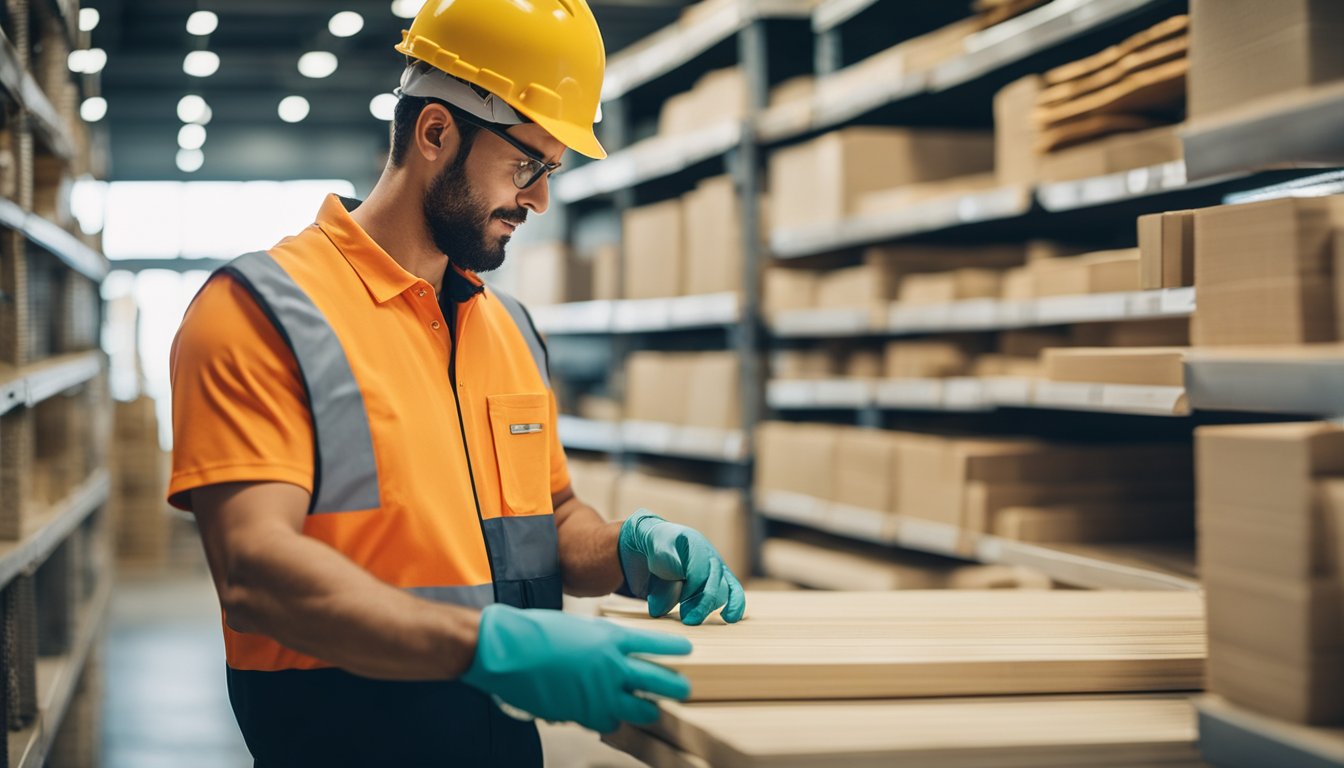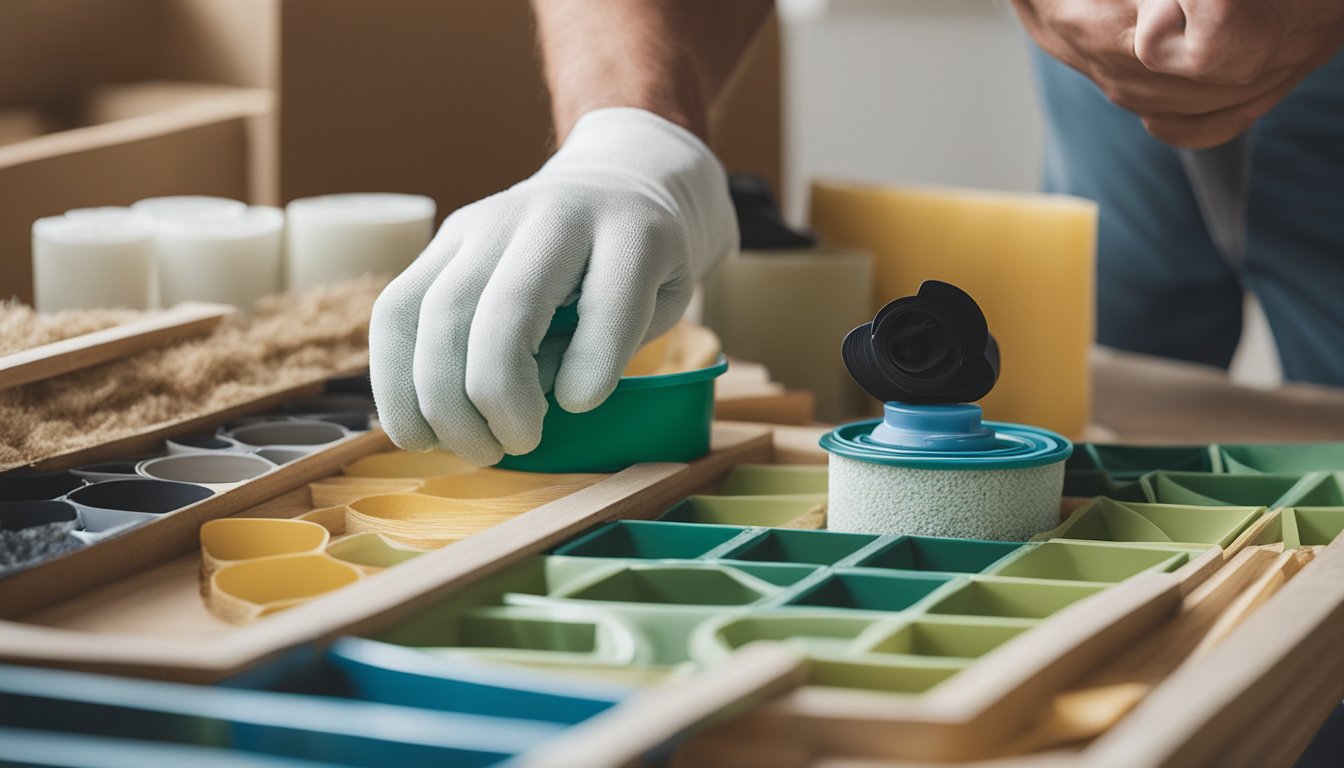Late updated: 31 Jul 2024 14:07
Written by: Daniel Harper
Choosing Safe Building Materials For Home Renovations: A Practical Guide
Choosing the right building materials for home renovations is crucial for ensuring both the safety and sustainability of our living spaces. As we embark on renovation projects, it's important to select materials that are not only environmentally friendly but also minimise health risks. Choosing safe and sustainable materials can significantly enhance the longevity, health, and value of our homes.

Incorporating eco-friendly materials into our renovation plans can help us reduce our carbon footprint and ensure that we are contributing positively to the environment. For instance, materials like Timbercrete, a composite of sawdust and concrete, provide an excellent example of reusing waste products to create durable building solutions. This approach not only mitigates landfill waste but also supports the growing need for sustainable construction practices.
Importantly, selecting materials that are safe for our families is just as critical. Using non-toxic, renewable resources ensures that the indoor air quality of our homes remains high and free from harmful chemicals. By making informed choices, we invest in healthier living environments while also playing our part in global efforts to promote green building practices.
Key Takeaways
- Sustainable materials improve home longevity and environmental impact.
- Eco-friendly options like Timbercrete reduce waste and support green building.
- Non-toxic materials enhance indoor air quality and family health.
Evaluating Sustainable Materials and Practices
Choosing eco-friendly materials and efficient practices for home renovations can significantly reduce the carbon footprint, improve energy efficiency, and enhance indoor air quality. Several sustainable options and methods are available, ranging from natural resources to recycled components.
Assessing Environmental Impact of Building Materials
When selecting building materials, we must evaluate their environmental impact. This includes considering greenhouse gas emissions during production, transportation, and disposal. Materials like recycled steel and recycled glass not only save natural resources but also cut down on energy consumption.
LEED certification is a benchmark for evaluating the sustainability of materials. It assesses factors like the carbon footprint and lifecycle impact, guiding us in making eco-friendly choices. Monitoring these aspects ensures we opt for materials with minimal adverse effects on the environment.
Sustainable Material Options for Home Renovations
There is a variety of sustainable building materials available for home renovations. Timber and bamboo are renewable resources with low carbon footprints. They are durable and aesthetically appealing. Cork and hemp offer excellent insulation properties and are biodegradable.
For those seeking innovative solutions, plant-based polyurethane rigid foam and ferrock—made from recycled materials—are optimal choices. Using straw and clay can also enhance indoor air quality due to their natural properties. We should consider incorporating these materials to foster a sustainable and green building practice.
Incorporating Efficiency in Design and Construction
Efficient design and construction techniques play a crucial role in sustainable practices. Proper planning can minimise waste and maximise resource utilisation. Integrating renewable energy sources like solar panels can significantly reduce household energy consumption and greenhouse gas emissions.
Effective ventilation systems improve air quality, while energy-efficient appliances contribute to lower utility bills. Eco-friendly materials like sustainable insulation options further enhance energy efficiency. The focus should be on creating a circular economy within home construction, where materials can be reused or recycled, promoting sustainability and long-term environmental benefits.
Mitigating Health and Safety Concerns

In any home renovation, health and safety are paramount. Our choices significantly impact both the immediate environment and long-term well-being of the household.
Improving Indoor Air Quality with Non-Toxic Materials
Indoor air quality can be severely compromised by volatile organic compounds (VOCs) emitted from traditional building materials. These VOCs, found in some paints and finishes, can cause respiratory issues and long-term health problems. To mitigate these risks, we should use low-VOC or zero-VOC paints and finishes. This switch greatly reduces harmful emissions.
Natural materials such as clay, adobe, and mycelium not only improve air quality but also offer sustainable building options. These materials are not chemically treated, thus ensuring minimal off-gassing. Additionally, incorporating plants that are known for their air-purifying properties further enhances indoor air quality significantly.
Choosing Durable and Safe Flooring, Walls, and Insulation
Flooring options made from sustainable materials like bamboo and reclaimed wood are durable and have a lesser environmental impact. These materials provide a balance between longevity, aesthetics, and safety. Tiles and natural stone are also excellent choices, being both robust and free from harmful chemicals.
For walls, options such as rammed earth, hempcrete, and straw bales offer not just durability but also thermal insulation, contributing to energy efficiency. These materials often have lower embodied energy and reduced emissions during production.
Regarding insulation, using non-toxic options like sheep's wool, papercrete, or timbercrete ensures that harmful chemicals are not introduced into the home environment. These materials not only provide excellent thermal properties but are also safer for health compared to traditional fibreglass insulation, which can irritate the skin and lungs.
Choosing our building materials wisely ensures both safety and sustainability. By prioritising health and environmental impact, we create homes that are not only protective but also harmonious with our well-being and the planet.
Frequently Asked Questions

Choosing safe building materials for home renovations involves careful consideration of various factors, from ensuring safety standards to selecting sustainable and cost-effective options. Our answers address these crucial aspects to guide you through the process.
What factors should be considered to ensure the safety of building materials during home renovations?
We must check for certifications and compliance with building codes. Materials should be fire-resistant and non-toxic. Look for issues such as structural integrity and resistance to moisture, pests, and mould. It's also wise to consider the longevity and maintenance requirements of the materials.
How can one identify and select the most secure materials for constructing a house?
First, obtain materials from reputable suppliers. Always review product data sheets and safety ratings. It's essential to choose materials with high durability and those that have been tested under stringent conditions. Protective features like impact resistance and fire retardance should also be prioritised.
What are some sustainable and safe building materials for energy-efficient home designs?
We recommend using materials like recycled steel, bamboo, and insulated concrete forms. Other options include reclaimed wood and natural stone. These materials not only conform to high safety standards but also help in reducing energy consumption, promoting a sustainable living environment.
Could you provide a comprehensive list of materials necessary for building a house?
Materials needed include:
- Concrete and cement for foundations.
- Bricks and blocks for walls.
- Steel and wood for framing.
- Insulation materials.
- Roofing materials like tiles or metal sheets.
- Plaster, drywall, and paint for finishing.
- Electrical wiring and plumbing supplies.
In what ways can alternative building materials reduce costs for low-cost housing without compromising safety?
Utilising materials like earth blocks or straw bales can be cost-effective. These alternatives are durable and offer good insulation. Repurposed shipping containers are also a safe and economic choice for housing. These materials meet safety requirements while significantly lowering construction expenses.
What criteria are important to follow when evaluating building materials for home construction to ensure durability and safety?
Look for materials with proven track records and high ratings in safety tests. Check for resistance to environmental factors such as moisture and temperature changes. It's critical to ensure compatibility with other building components and adherence to local building regulations for overall safety and durability.
